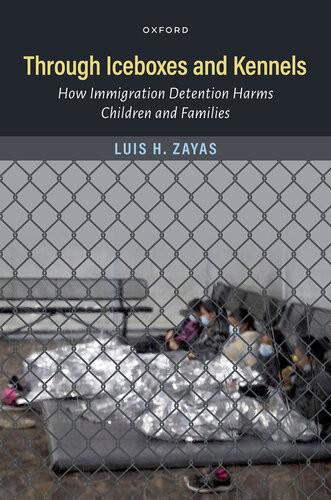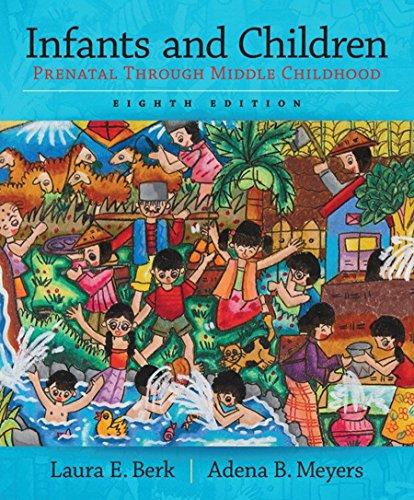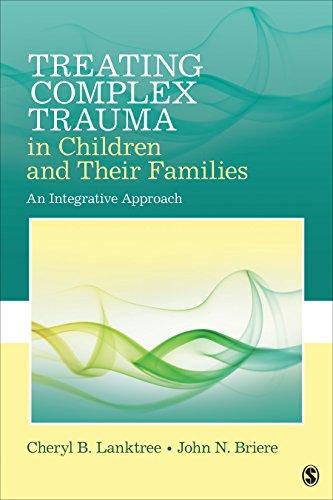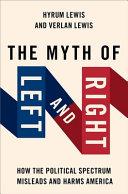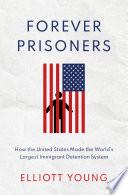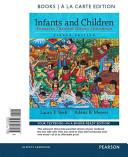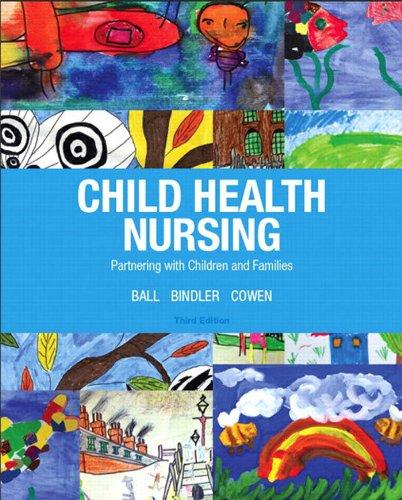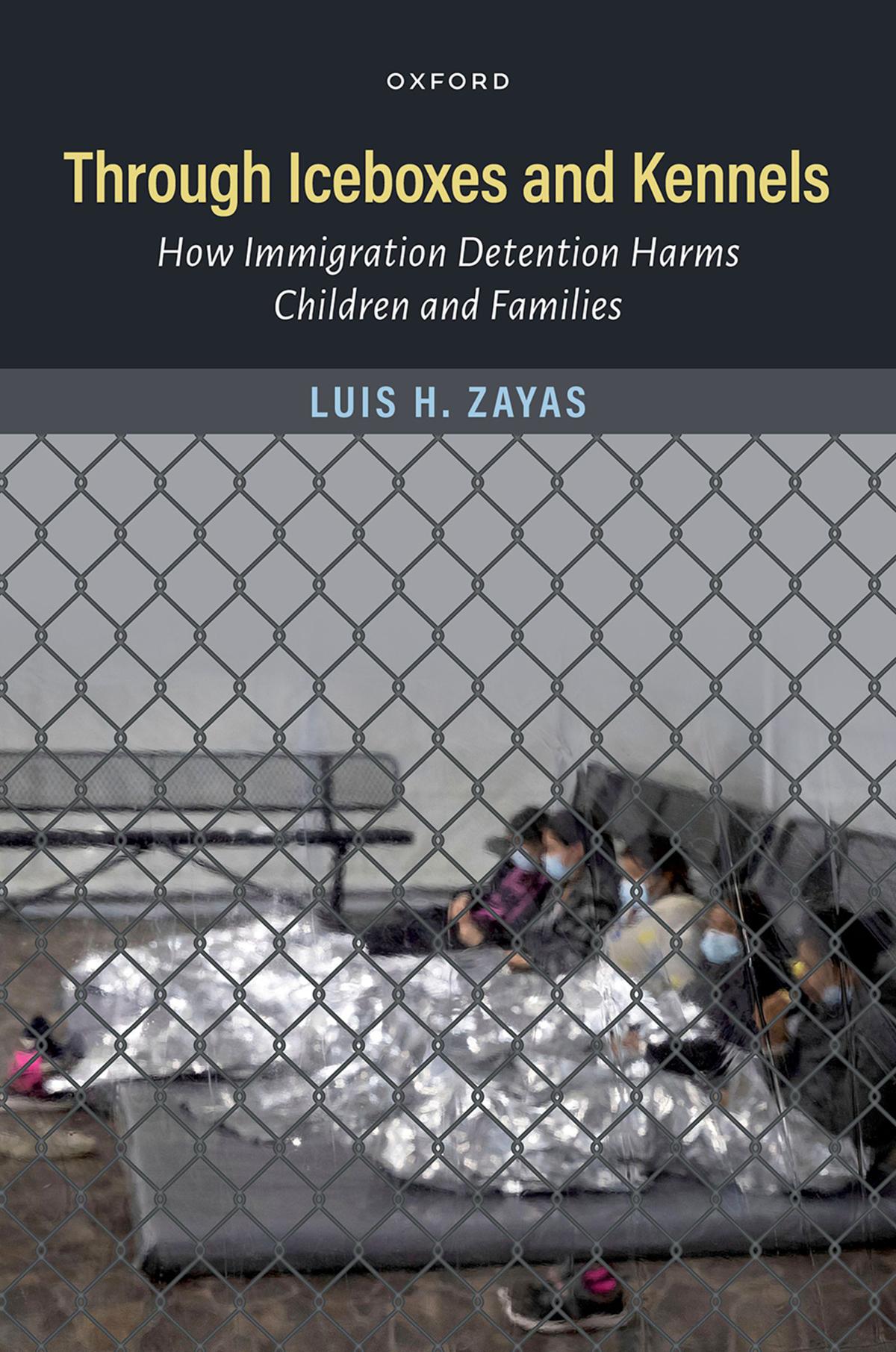Through Iceboxes and Kennels
How Immigration Detention Harms Children and Families
LUIS H. ZAYAS
Oxford University Press is a department of the University of Oxford. It furthers the University’s objective of excellence in research, scholarship, and education by publishing worldwide. Oxford is a registered trade mark of Oxford University Press in the UK and certain other countries.
Published in the United States of America by Oxford University Press 198 Madison Avenue, New York, NY 10016, United States of America.
© Oxford University Press 2023
All rights reserved. No part of this publication may be reproduced, stored in a retrieval system, or transmitted, in any form or by any means, without the prior permission in writing of Oxford University Press, or as expressly permitted by law, by license, or under terms agreed with the appropriate reproduction rights organization. Inquiries concerning reproduction outside the scope of the above should be sent to the Rights Department, Oxford University Press, at the address above.
You must not circulate this work in any other form and you must impose this same condition on any acquirer.
Library of Congress Cataloging-in-Publication Data
Names: Zayas, Luis H., author.
Title: Through iceboxes and kennels: how immigration detention harms children and families / by Luis H. Zayas.
Description: New York: Oxford University Press, [2023] | Includes bibliographical references and index.
Identifiers: LCCN 2022040690 (print) | LCCN 2022040691 (ebook) | ISBN 9780197668160 (Hardback) | ISBN 9780197668184 (epub) | ISBN 9780197668191
Subjects: LCSH: United States—Emigration and immigration—Government policy. | Immigrant families—Government policy—United States. | Noncitizen children—Government policy—United States. | Noncitizen detention centers—United States—History. | Detention of persons—United States. | Unaccompanied refugee children—Care—United States. |
Psychic trauma in children—United States. | Post-traumatic stress disorder in children— United States.
Classification: LCC JV 6483 . Z 394 2023 (print) | LCC JV 6483 (ebook) | DDC 325.73—dc23/eng/20221024
LC record available at https://lccn.loc.gov/2022040690
LC ebook record available at https://lccn.loc.gov/2022040691
DOI: 10.1093/oso/9780197668160.001.0001
ForCharlotteandAbigail,whotaughtmeagreaterlove. Andtoallthebravemothersandfatherswhoendured lossesandsacrificedeverythingtocrosstheirchildrento safety.
In the depths of darkness
On the verge of losing all hope
One still maintains a little glimmer of hope
Deep down inside
A tiny light
About the size of a speck
Like a distant star
Is spotted on the horizon this dark night.
Behrouz Boochani
Contents
NotesonNamesandTerms
Introduction
PART I THE STATE OF AFFAIRS
1. The Poet, Heroic Mothers, and Cash Cows
2. Ordeals and Histories of Immigration
3. I Didn’t Sign Up for This
4. Detention as Licensed Child Care—Texas-Style
5. Take the Children. Age Doesn’t Matter
6. Hiding Boys in Therapeutic Detention
PART II THE HUMAN COSTS
7. Studying Families, Hearing Their Stories
8. Stages of Central American Immigration
9. Stress, Trauma, and Children’s Development
10. I Need to Tell My Story, Too
11. Sleepless Under the Bridge in El Paso
12. A Mother’s Doubt, a Child’s Hunger
13. Sufrir, Sufrimiento, and Hallucinating the Invisible Killer Girl
14. Four Generations of Mothers and Daughters
15. All That Comes After
Acknowledgments
References
AbouttheContributors
Index
Notes on Names and Terms
This book quotes and paraphrases many children and their mothers who spoke to me and my research team. At times, the book quotes women and kids who spoke to the press, sometimes identified by name, often not. The names of those families I met have been changed to protect their privacy and identities and to protect the children, siblings, spouses, partners, parents, neighbors, friends, and extended families they left behind or have in the United States. The locations and names of their Central American towns and villages have also been changed to guard against anyone being identified and exposed to reprisals from the very people who drove their loved ones into exile. What has not been altered are the gender, ages, or countries of origin of the persons who spoke to us. To place the stories in context, I add historical, political, economic, social, psychological, and legal commentary.
The only real names that are mentioned in this book are those of persons in public roles, such as experts, attorneys, and judges whose names appear on legal documents or news reports. When the names of my collaborators and colleagues appear, it is with their permission. There are some children and parents who have been identified publicly, but I chose not to disclose their names or other identifying information if it seemed that discretion was best.
In trying to present the stories accurately, I have stayed as true to the words of the speaker as possible and tried to convey the styles and manner of speech of the persons narrating the stories. In passages when I work from my recollection or my students’ recollections of experiences with children or parents, I use paraphrasing or limited quotes if part of the recollection included words or phrases that stuck in our memories. Occasionally, I condense sentences for the sake of brevity. Sometimes, I
resequence words and comments or correct the grammar to make their statements clearer and easier to comprehend. When a child or parent used a Spanish proverb, adage, colloquialism, or creative form that is striking, evocative, metaphorical, or simply engaging, I present it in Spanish with an English translation.
The families depicted in this book all sought asylum, the legal status which I use to refer to them. When referring to persons who entered the country without asking for asylum or without legal documents or permissions, I use the terms undocumented immigrant and unauthorizedimmigrant. They are persons who entered the country without permission or other legal documents or who entered with the proper documents but stayed beyond the time the permission allowed, such as after their visa has expired. Although my focus is on families, there are times when the term unaccompaniedchildren appears. They are children who have no lawful immigration status in the United States and are not yet 18 years of age. They might not have a parent or legal guardian in the United States or anyone who can provide care and physical custody.1
When referring to nationalities I use the names of their countries and nationalities—Salvadoranfor those from El Salvador, Guatemalan for those from Guatemala, Honduran for those from Honduras, and so on. They may also be described as being from Central America or from the Northern Triangle countries of Central America. When including them in the large segment of our population who claim ancestry and heritage in Latin America, I use the term Latino or Latinaor Hispanic.
The term maras or mara will appear often in the stories told by families. Maras is short-hand for Mara Salvatrucha, sometimes known as MS-13, that originated with the Salvadoran gangs in Los Angeles in the 1970s and 1980s and became an international criminal organization. Maras has become the referent to any organized gang or local gangs. Whether a gang is part of MS-13 or its rival, the 18th Street Gang, or a group of village thugs, the people of Central America use maras to refer to any gang that terrorizes them. The Spanish word for gangs, pandillas, is used
sometimes, primarily when the term is used by those I quote. Other common Spanish terms, some colloquial, also appear, such as hielera (icebox, freezer), perrera (kennel, dog pound), and migra (a reference to migration officials of any country). Using them offers a ring of authenticity to the speech patterns and idioms used by Latin American migrants.
Note
1. US Department of Health and Human Services, Office of Refugee Resettlement, 2012.
Introduction
It was the spring of 2014 when a surge of families appeared at the US–Mexican border, seeking safe haven in the United States, having run risks that could have led to their deaths. In response, under the presidential administration of Barack Obama and with the support of Congress, the United States began locking up thousands of asylumseeking mothers and children from Central America in so-called family residential centers. This was not the first time that the border had adults, families, and even unaccompanied children coming in large numbers in search of safety and security. In 2010, for instance, migrants from the Central American countries of El Salvador, Guatemala, and Honduras accounted for about 10% of migrants apprehended at the southern border with Mexico. During the winter and spring of 2014, family units migrating together for safety began to appear more frequently. By the end of the decade, the proportion of Central American migrants apprehended at the border was 81%. While many were adults traveling alone, there were increasingly more family units taken into custody at the border.1 In 2019, Customs and Border Protection reported the highest level of apprehensions since 2007—about 689,000 migrants from El Salvador, Guatemala, and Honduras. Of the total, 62%, or 430,546 individuals, were traveling as family units, and just under 10%, or 62,748, were unaccompanied minors.2
Unique about 2014 was the arrival of the largest single surge of families, mothers with minor and tender-age children—showing up desperate, tearful, hungry, tired. The vast majority came from the Northern Triangle countries of Central America of El Salvador, Guatemala, and Honduras; but there were also mothers and children from Mexico, the Caribbean, other parts of Central and South America, even eastern Europe, the Middle East, Africa, and Asia. It was unlike anything that the United States had ever seen.
It was also not the first time that the federal government had put mothers, fathers, and children in immigration prisons, or “baby jails” as many called them. But the spring of 2014 ushered in the most extensive and longest-running era of family detention. Pictures from this national disgrace showed desperate mothers with children surrendering, with tears of fear and gratitude, to US border agents. The children’s faces were blurred, or the cameras were trained on their feet or hands to protect their identities and innocence as minors. Adult men weren’t offered the same anonymity, especially under Donald Trump. Their faces were shown by newspapers and other media, playing into Trump’s efforts to stoke fear of them as bad hombres, a term he first used in an October 2016 presidential debate with Hillary Rodham Clinton. Trump added more slurs to this growing glossary of rhetorical devices he slung at immigrants— Mexicans as “rapists,” Haitian immigrants as “all have AIDS,” Nigerian immigrants who wouldn’t “go back to their huts.” Other terms included “chain migration” and “shithole” countries.3 Trump harbored no empathy for children and mothers traveling alone or poor people fleeing violence. His misleading rhetoric about the nature of migrants traveling north coarsely claimed too that the caravans were rife with hardened criminals. Without any evidence, Trump warned in an immigration speech on November 1, 2018, of brown hordes coming north:
At this very moment, large well-organized caravans of migrants are marching towards our southern border. Some people call it an invasion. . . . These are tough people in many cases; a lot of young men, strong men and a lot of men that maybe we don’t want in our country. . . . This isn’t an innocent group of people. It’s a large number of people that are tough. They have injured, they have attacked.4
Disingenuous rhetoric, unsubstantiated statements, and false alarms were Trump’s tools. The reality was that amid a global refugee crisis that sent people fleeing their home countries on virtually every continent, Central America was seeing its own share of women fleeing violence, extortion, rape, and murder in their motherlands. They weren’t bad hombres, criminals, murderers, or
rapists. With little to no protection from the government or law enforcement to handle the surging waves of violence and corruption in their home countries, Central American women had few options but to leave behind parents, siblings, and other loved ones to protect themselves and their children. They left familiar lands, ancestral homes, and cultures and rituals that filled their spiritual and emotional needs. Poverty and economic hardship had already reached into every aspect of their lives. Now the civil instability brought devastating effects on them, their families, and their communities. In 2014, tens of thousands of women and children came seeking safety—asylum—in the United States.5 The number of women crossing the US border was nearly three times higher than in 2013, only 1 year prior.6 An alarming feature of this refugee crisis was the number of children fleeing home, with their mothers or alone. Over 66,000 unaccompanied and separated children from the Northern Triangle reached the United States in 2014.7 Others sought safety, refuge, or asylum in neighboring countries, such as Mexico, Belize, Costa Rica, Nicaragua, and Panama—countries that saw the number of asylum applications from Northern Triangle countries grow about 13 times over the previous 6 years.8
“Fleeing is an ordeal in its own right, and for most women, the journey to safety is a journey through hell.” That is how a 2015 report by the United Nations High Commissioner for Refugees described the plight of women migrants from Central America.9 In this book, I tell about that hell, its origins, and the aftermath in US immigration systems. The book examines the experience of Central American children and parents migrating to the United States in search of asylum. It tells about the detention and sometimes forcible separations that have become a tableau of our time. I trace the arc of immigration detention that began under the Obama administration and continued through the Trump administration and into the early days of the Biden presidency, including the family separation policy that took children from the tenderest ages from their parents at the border. At the heart of this book stand the stories of families who were forced to leave their countries,
journeyed through treacherous terrain, and ultimately landed in the hands of an American immigration apparatus that is a part of the profit-driven prison–industrial complex of the government, private prison companies, and other groups.10 These are the true stories told by just a few dozen of the thousands of parents and children held in the US immigration detention centers during the period between 2014 and 2021.
“Scarce few of their stories have been told. Most will never be,” writes NBC News correspondent Jacob Soboroff in Separated:Inside anAmericanTragedy. “There are families who were quickly put back together, and children who were, as predicted, permanently orphaned. My one little blue [reporter’s] notebook could never do all their stories justice.”11
True, no one book can convey the suffering of families and children in detention and those who were separated. Still, I wanted to tell the stories of the families I met to add to the scarce few that have been told. Without a doubt, these stories must be heard and understood and placed within proper contexts—their countries, the migration journey itself, and the appalling experience of being incarcerated just for seeking asylum. Readers, I thought, need to hear the stories of detained and separated families—mothers and children who had left their countries; braved their way across rugged land and international borders; felt cold, heat, hunger, and thirst; suffered kidnappings and ransoms, violence, rapes, assaults, and humiliations; and saw death, cadavers, human remains, and other unimaginable horrors. Readers need to know about the effects of the detention that President Obama started and that Donald Trump took to an extreme with his family separation policy, adding untold misery to hundreds of already traumatized children. I want readers to hear from the detained and separated mothers and children themselves, about how their lives, minds, and souls were permanently wounded and scarred, effects that have been seen few times in American history. Through the voices of mothers, fathers, girls, and boys we can know the cruel and callous policies and actions of officials of the US government and the private prisons that engorge themselves on
government dollars by holding mothers, infants, toddlers, school-age children, and teenagers as prisoners for simply setting foot in the United States and asking for asylum.
In 2014 and several years after, the public’s attention was not on the detention of mothers and children. We can forgive Americans for not knowing. After all, much of the American media was concentrated on the misery of hundreds of thousands of people crossing the Mediterranean Sea from North Africa and the Middle East into Europe. It was capturing the stories and blistering images of rickety vessels operated by unscrupulous people with more human cargo than the vessels could reasonably bear. The huddled masses were fleeing decades of civil conflict, genocide, famine, corruption, and repression. The riveting picture of Aylan Kurdi, the Syrian toddler whose lifeless body washed up on Bodrum Beach in Turkey, rocked the globe.12 Americans were profoundly moved by that haunting image, as they should have been.
It seemed that Latin American news sources— Univision and Telemundo and regional networks—and local news outlets in the Southwest United States were paying attention to our southern border. These news sources were showing, almost nightly, the travels and travails of Central Americans coming to the border with children, some infants, begging for help. The images were no less compelling than those from half a world away. Then, two events drew the US media’s and the American public’s greater attention to the situation of Central American migrants.
One was pictures and videos of children and mothers during the summer of 2018 when the family separation policy was at its peak, images accompanied by the sounds of wailing children and crying parents. The American public responded and forced an unemphatic president to stop the atrocity. The other event was the June 24, 2019, photograph of the drowned bodies of Salvadoran migrant Oscar Alberto Martinez Ramirez and his toddler daughter, Valeria, on the bank of the Rio Grande in Matamoros, Mexico. First published in a Mexican newspaper, the picture by Julia Le Duc, a Mexican
photojournalist, was sent around the world via social media.13 The picture shows a migrant and his less than 2-year-old daughter lying face down in the murky waters on the Mexican side of the Rio Grande. The girl’s right arm rests across the back of her father’s neck. . . . The image encapsulated the grim reality of the border amid the growing desperation of migrants fleeing poverty and crime in Central America and elsewhere who are willing to face great dangers at times with children for a shot at a better life in the United States.14
That image of a child holding on to her father even in death gave the US public a better understanding of what was happening in their own backyard.
This book is not an anthology of family stories, although I wanted to pay tribute to the stories of the many children and parents I met. But there is, we can agree, no more powerful means to illuminate than through storytelling. The tradition of telling the stories of detained, interned, and jailed people who committed no crimes or who may have been guilty of minor misdemeanors and were persecuted by their governments is a long one. It is a literary tradition that has always fascinated me. In this book, I wanted to cast a light on the atrocities that government systems can commit on people—citizens or non-citizens—by telling the stories of those who were the victims of such brutality and inhumanity. Some of the stories included in this book were told by others, in newspapers, documentaries, and reports by human rights organizations. Others were told to me and my research team, first-hand, using the tellers’ own words, glimpsing the insider’s view. The words are of the children and parents who spoke to us in simple, everyday vernacular Spanish. Every one of the mothers and fathers who let me into their lives is a humble but proud person. They came from small towns in the countryside of El Salvador, Guatemala, and Honduras. All knew poverty and had worked hard to feed, shelter, and protect their children but could no longer do so. A fraction of those I met had more than a high school education, but most were semi-literate or
illiterate. Regardless, they are people reverent of the written word, not just the spoken one. They know of the world of books but have, for the most part, not been trained to read them, absorb their knowledge, and expand their worlds. They were pushed into exile by conditions of violence, threats, poverty, climate change, and no protection from anyone.
The brave people I met or read about will probably not be the ones to chronicle the events of their migration and the aftermath. More than likely, only a few kept diaries or wrote letters or poetry. If they have confided about their lives in their diaries or letters written to others, then those writings must be found and brought to publication for others to understand the trajectories of their lives. (One exception is the letters collected by Grassroots Leadership, Inc., in Texas, that appear in Chapter 5.) Whatever they have written in their own hand, told in their own words, or recorded for or passed orally to their children and grandchildren, as well as what has been written by others about them, will form a body of writings chronicling the first three decades of the 21st century when they were the targets of the paroxysms of hate that poisoned US policies. Their children, we pray, will write memoirs of the time they spent on the road and in detention and of life after detention. Until then their lives must be recorded as best as we can for the world to grasp the human agony. I hope that this book adds, however modestly, to the collection of stories from this period in American history.
With this in mind, one objective of this book is to describe the conditions that drive desperate families to take flight and endure the difficulties of coming to the United States. A second objective is to portray the migration itself, the human costs of a perilous, possibly deadly journey, and the resilience and triumph of so many people. A third objective is to expose the experiences of children and parents at the hands of the immigration system of the United States, where cruelty, harshness, and punitiveness often stood side by side with kindness, compassion, and professionalism. I wanted to highlight the immorality of incarcerating children and mothers, sometimes separating them as if they were petty criminals and, in the process,
causing untold human damage. It is an unfair, inhumane attack that continues through the time of the writing of this book. The fourth objective is to pull together what I had learned into a conceptual model or explanatory framework to inform our understanding of Central American migration to the United States from the perspective of parents and children who made the trek to find asylum. My intention is to inform. But my deeper motive is to ignite thinking, conversation, and reflection that might change minds and influence how immigration enforcement is debated at the federal and state levels and the way immigrants are treated by the government’s enforcement systems. Perhaps a reader or group of readers will take some of the ideas proposed in this book and be the change they want to see.
In Part I of the book, titled “The State of Affairs,” I tell of my first encounter with families in detention and my subsequent interactions with detainees—children and adult women—and with government employees as well as prison guards. I tell about how private prisons have been licensed as child care centers and about the ignominious separation of children in 2018. I try to shed light on how the Office of Refugee Resettlement held teenage immigrant boys in a therapeutic residential center away from the prying eyes of the news media. Part II analyzes the human costs of detention and separation; hence, it is titled “The Human Costs.” From information and data that I gathered first-hand and pulled from history books, scientific journals, legal documents, photographs and videos, news media reports, and anything I could learn from, I formed impressions about the stages of the Central American migration process. These impressions led to the development of a model to explain and describe Central American migration since 2014 (and possibly before). Part II reviews the science of stress and trauma, informed by research on immigration and detention, child psychiatry, neuroscience, and human development, as well as my personal accounts from working in this area of the immigration enforcement system. To add the human dimension to these chapters, I draw on the many illuminating descriptions, clips, and full-length stories that cover, to some extent, the range of stages of the migration process.
This book does not examine immigration as a global phenomenon. Instead, it focuses on a sliver of the world’s migration: the crisis of women and children, sometimes fathers, who fled the Northern Triangle of Central America as family units and applied for asylum in the United States. I focus on children because, as a developmental psychologist, I understand the long-term impact of adversity on their lives. The events that began before 2014 drew my compassion and abiding interest. These happenings escalated that year into a national crisis and a national disgrace, a cruel multipronged government attack on the next generation. Although it is possible to see families as stories in a long procession of stories, it is not possible to write a book that explores the migration of families from all countries, continents, cultures, economies, and forms of government. I don’t attempt to do so in this book, not because the many migrants seeking asylum from Africa, Asia, and other South American countries matter less. Nor is it because fleeing persecution for one’s religion, ethnic group, sexual orientation, or sexual identity does not have a place in broad, global immigration trends. I stay within the field that I know and study and leave the description of other migrants in the capable hands of writers who are far better informed about them than I am.
Notes
1. Congressional Research Service, 2019.
2. US Customs and Border Protection, 2020.
3. Finnegan & Barabak, 2018; Hirschfeld Davis & Shear, 2019.
4. Yen & Long, 2018.
5. Retrieved from the United Nations High Commissioner for Refugees Population Statistics Database, https://www.unhcr.org/refugee-statistics/.
6. Galvan, 2014.
7. US Department of Homeland Security, 2015. Between 2008 and 2015, the US Customs and Border Protection recorded a 561% rise in unaccompanied and separated children apprehended at the border.
8. United Nations High Commissioner for Refugees, n.d.
9. United Nations High Commissioner for Refugees, 2015.
10. The others in the prison–industrial complex include suppliers of goods and services such as construction companies, surveillance and corrections technology vendors, food service companies, for-profit medical companies, unions, and lobbyists. For more on the prison–industrial complex, see Alexander, 2010. For details on immigration detention, see Ebert et al., 2020; Haberman, 2018; Young, 2021.
11. Soboroff, 2020, p. xix.
12. Vinograd & Omar, 2015; Katz, 2021.
13. Le Duc, 2019.
14. Linthicum, 2019.
1
The Poet, Heroic Mothers, and Cash Cows
The southerly drive from Austin to Karnes City, Texas, takes about 2 hours. The first half-hour or so is on Interstate 35, traveling past car dealerships, fast food restaurants, and outlet malls. Leaving I-35 around about San Marcos, you take State Route 123 past front yards, farms, ranches, and “the graveyards of rusted automobiles,” as Johnny, Arlo, and Willie sang.1 Small towns along the way are steeped in Texas history. One of them is Geronimo, known for its annual barbecue and chili cook-off. Then comes Seguin, established in 1838, once a frontier stop for the then-12-year-old Texas Rangers patrolling a three-county area. After Seguin, you go past Stockdale, which describes itself as a “friendly little town” and host to the annual Watermelon Jubilee since 1937, one of the oldest watermelon festivals in Texas. Route 123 brings you straight into Karnes City, a town occupying a more recent seat in Texas history.
Like any drive I have taken on unfamiliar country roads, the first trip to Karnes City was slow; it took longer than any other time that I drove there. It all started with a call from a lawyer with the National Center for Youth Law in Oakland, a non-profit law firm with a 30-year history of advocating for immigrant children in federal immigration detention. She was leading a group of legal advocates from Oakland, California; Austin, Texas; and other parts of the country to visit a family immigration detention center in Karnes City. The call had come unexpectedly, without a lot of detail; but it was urgent. The information I could gather from the conversation was that the group had filed a request with the US Department of Homeland Security to look at and assess the conditions of the immigration detention center in Karnes that held asylum-seeking
mothers and children. The lawyers’ group had been granted permission. Someone who knew my work with immigrant children had recommended me as an experienced mental health professional who had worked for years with immigrant children and parents. Could I join them in 2 days? Was I in or not?
Truthfully, I did not know what it was I was supposed to do when I got to the detention center at Karnes. I was full of anxiety about entering an immigration detention center to see incarcerated families and children. I had visited a state maximum-security prison once. But a prison for families with children? Never. This would be my first. I signed on. I just wasn’t quite clear of what it was I would be expected to do or contribute, but I knew this was important. It left me a little nervous but undeterred. I joined the group made up of human rights and immigration lawyers as the mental health and child development specialist. The only red tape required to enter the detention facility was that I furnish a copy of my driver’s license, social security number, and other contact information to US Immigration and Customs Enforcement (ICE), a division of the Department of Homeland Security that is responsible for enforcing immigration laws at the border and within the interior United States. ICE has authority to investigate border violations and apprehend, detain, and remove anyone who enters the United States without permission.2 Two days later I hit the road at 6:00 in the morning, just to make sure I arrived by 9:00. Besides being a maiden trip on new roads and towns, my anticipation made the drive feel longer. I drove down I-35 and Route 123, fueled by caffeine, anticipation, and anxiety. Thoughts, ideas, questions, scenarios, and plans sped across my mind faster than usual. My brain was doing what brains do in the absence of facts: fill-in the gaps, hypothesize about uncertainty, concentrate attention, and prepare with conjured scenarios and questions. The answers that formed to close the holes vanished as quickly as they appeared. What I could hold on to was the humanitarian operation, vague as it was, but one that was nothing less than a call to duty. Only the confidence in my expertise on the psychological conditions of immigrant kids and parents
calmed me that day, and every visit after. On August 19, 2014, I didn’t know that this 2-hour drive would be a trip I would take many more times, much less that it would change the direction of my life. Still less known to me was that this and subsequent visits, meetings, interviews, conversations, investigation, readings, teaching and public speaking, and musings would lead to a book examining the plight of asylum-seeking parents and children. The book that emerged would present a framework through which we could understand the stages of migration and reveal the layers upon layers of stress and trauma heaped on migrants, a process that began in their home countries and spanned several thousand miles.
Karnes became the place in which I saw first-hand how the mental health of children and mothers was incubated, damaged or exacerbated, and set into unhealthy trajectories. It was at Karnes County Family Residential Center, and later at the South Texas Family Residential Center in Dilley, that I would truly understand how an environment of fear and deprivation worsens the stresses and traumas of home-country violence and migration. In Baby Jails:The Fight to End the Incarceration of Refugee Children in America, Georgetown University law professor Philip Schrag captures how different the Dilley detention center was in comparison to Karnes.
[P]rivacy at Dilley was worse than at Karnes. . . . The housing at Dilley consisted of trailers, each of which had beds for more than one family, as well as a couch, a television, and a phone, but no bathroom or other private area. Children from one family were therefore housed in the same quarters as adults from other families. . . . (This intermingling of adults and unrelated children would not be allowed in a licensed child care facility). To change clothing in the living area, adults or children had to pull a curtain around themselves; to use a bathroom they had to go outside of the living area and down a hallway.
The families were reportedly awakened by middle-of-the-night bed checks, and the wait for medical care could “exceed five hours,” after which the staff nurses “prescribe[d] a mixture of honey and water for a wide variety of ailments.” When children misbehaved, they were sent with their mothers to solitary confinement for several hours in a “cold room.”3
Karnes City, with a population of about 3,000, is the seat of Karnes County and is located on the Eagle Ford Shale, at the time one of the top oil-producing areas of Texas. Karnes County saw a boom in the gas and oil industry in 2011, driven by the advancements in hydraulic fracturing, more commonly known as fracking. When I visited, there were more than 2,300 active wells in Karnes County that spewed pollutants associated with cancer, brain damage, and respiratory problems—just about one well for every six county residents. Hundreds of immigrant mothers and children were being held in a detention center in the midst of this poisoned environment. It was worse for those confined at Dilley, according to Schrag.
[They] were also concerned about the water. Fracking in other areas of Texas produced “millions of gallons of contaminated wastewater” that was trucked to the town of Dilley and dumped into abandoned wells that were “repurposed as ‘disposals’ for the toxic mix.” The officers and medical staff reportedly drank bottled water, and volunteer lawyers were also cautioned to drink only bottled water, but the mothers and children had to drink tap water.4
Finding a hotel room in Karnes on my first visit and the times after took planning. Nearly every motel and hotel room within miles was booked months in advance by the fracking companies to house the hundreds of young men in search of fast money and adventure. Outside of every restaurant and bar there were pickup trucks with large, muddy tires. Inside the bars and restaurants were the strong young men who drove the pickups—making brisk fortunes and spending them almost as quickly, much like the thrill-seekers of the California gold rush of 1849 or the oil wildcatters of the 1870s.
When I arrived and met up with my fellow visitors, I learned that we would be toured through the facility by ICE and the GEO Group (GEO) prison officials, allowed to question some staff, and permitted to interview the detainees, both mothers and their children. As the only mental health professional in the delegation, my job was to talk to mothers and children, to hear their stories, and to gauge how they were coping. The detainees could also tell me how the government and prison operator were treating them.
The Karnes County Family Residential Center, as it was called at the time, is a prison, plain and simple. Calling it a “family residence” to evoke the image of a quaint lodge didn’t fool anyone that it was anything but a prison. From the parking lot, you see a large entrance painted blue with 20-foot walls stretching left, right, and back to enclose the part of the 29-acre facility that is actual prison space. You can’t see in. Detainees cannot see out. There are no windows for those inside to watch people walking their dogs or jogging or cars speeding by or even see the sun rise or set on the horizon. The walls confirm that Karnes is a prison for families.
In July 2014, ICE decided to convert what was originally a county prison into one that would house women and children who had arrived at the US–Mexican border asking for asylum. Karnes was the first ICE detention facility built from the ground up, according to ICE’s online Key Facts.5 The building forms a large rectangle, with the front section of the interior taking up the largest portion of its space. It has three wings that run perpendicular to the front section, each two stories tall and with outdoor spaces in between where detainees can walk and play. Operating Karnes at the time involved a series of contracts. ICE contracted with Karnes County government to run the detention center under an intergovernmental service agreement. In turn, Karnes County subcontracted the day-to-day work to GEO, a private prison company that has been in the corrections field for over 30 years, not all of these with a clean record.6 Except for fracking there aren’t many jobs in Karnes City and County. Through GEO, locals find steady employment. Working for GEO in the detention center was the only good employment available, and, it seemed, not a lot of training was needed.
As recently as February 2019, the ICE web page boasted that the Karnes detention center is “a significant milestone in the agency’s long-term effort to reform the immigration detention system,” a dubious assertion since reforming the immigration detention system is not a mission that we commonly associate with ICE. Its family residential facilities are described as an “effective and humane alternative to maintain family unity as families await the outcome of
immigration hearings or to return to their home countries.” ICE asserts that its residents have freedom to move about from 6:00 in the morning to 10:00 at night and use the outdoor recreation areas and indoor playrooms. I heard stories of headcounts and demerits if teenagers were in their mothers’ cells rather than their own in the adolescent wing. It didn’t feel like freedom to them.
The Karnes cafeteria provides three meals per day and is open from 6:00 in the morning to 7:00 in the evening, according to ICE. But the detainees did not like the food. They would instead go to the commissary where a 10-ounce package of powdered milk sold for $5 —contrast this to $8 for 26 ounces at the local supermarket. At every visit to the commissary, mothers and children were snapped at by the grosera (rude) lady who ran it. One mother told me of an incident in the cafeteria when she was about to place bread in a toaster for her child. A female prison guard pushed her aside to get to the toaster for her own bread, saying to the woman and others waiting their turns, “Muévanse, muertos de hambre,” which translates roughly as “Move aside you starving wretches.”
The women and children we would meet, mostly from the Central American countries of El Salvador, Guatemala, and Honduras, were seeking asylum, a perfectly legal act. Every mother I met knew she had to request asylum.7 They were under no illusion that they could enter the United States with impunity. If they entered through an official checkpoint, such as a bridge, road, airport, or seaport, they could request asylum with ICE officers. If families crossed the borders with Mexico or Canada or entered the United States by sea at a location that was not an official checkpoint, they were more likely to encounter a Customs and Border Protection (CBP) officer. Either way they were passed on to ICE when apprehended.8
To be eligible for asylum, individuals must meet the definition of refugee as described in the Immigration and Nationality Act of 1965 (INA). Section 101(a)(42)(A) of the INA defines refugees as individuals who are outside of their home country and are unable or unwilling to return to it because of persecution or a “well-founded fear of persecution on account of race, religion, nationality,
membership in a particular social group, or political opinion.” An asylum seeker is a person who may meet the definition of refugee but is already in the United States or at its border or other port of entry seeking recognition.
After an asylum seeker arrives in the United States, immigration authorities take them into custody and begin the process of establishing the person’s eligibility for asylum. Parents undergo a credible fear interview (CFI), which is conducted by an asylum officer who asks formal questions and other questions that might arise during the interview in response to information given by the asylum seeker. With the information in hand, the officer determines if the individual and their family can apply for asylum protection. In recent years, many of these interviews have been conducted by telephone or online video conference with an asylum officer at some distant place, perhaps in an office several states away. The number of asylum applicants has far outpaced the number of officers available to conduct CFIs. Sometimes, a Spanish interpreter may participate in person or by telephone if the officer is not fluent. In other increasingly common situations, the need for an interpreter skilled in a rare Indigenous language may be needed, invariably provided by telephone or video conference. This need may delay the process until an interpreter is found. Essential to the CFI is that applicants share any information that can support their asylum claim. While US immigration laws allow the mothers I met to ask for asylum, they bore the burden of proving that they had a credible fear of persecution or torture to qualify for asylum. Communication and cultural differences sometimes created chasms between interviewers and migrant women, especially on discussions of rape, incest, and sexual abuse. This is especially acute in interviews with male officers. Even when asked directly and assured that it was a difficult but necessary topic, the women might not confirm their experiences. This was compounded when there was more than just the interviewer, such as an interpreter, male or female. Often, both women and men who have been the victims of sexual assaults and rapes feel ashamed and do not provide detailed information out of a sense of humiliation. Omitting critical information about rape and
sexual assaults could result in a negative ruling and necessitate an appeal if time and legal representation allow. The dynamics are fraught with power, vulnerability, humiliation, and inequality.
Nearly every Central American asylum applicant mentions the harms they suffered at home that constitute persecution in the US legal system. Most often, the mothers, fathers, and even unaccompanied minors who enter the United States cite serious physical attacks and criminal extortion or robbery that occurred in their countries. In the case of adolescents, families will also mention coercion by gangs that adolescent males become gang members through cruel, sometimes deadly initiation rites and that adolescent females become the physical and sexual property of gang members. In their asylum hearings, parents will mention the inaction, ineffectiveness, or complicity of police to the complaints they filed back home. They have claims of persecution carried out by governmental actors (e.g., police, corrupt officials) and nongovernmental actors (e.g., gangs, abusive partners, rapists) that the government is unwilling or unable to control. Corroborating evidence and documents are allowed to be presented, but even without them, a mother’s testimony, if deemed truthful by the asylum officers, may be enough to support a showing of credible fear.
If the asylum officer deems the person’s fear as credible, the law protects the individual from being returned to their home country. The usual next step is the presentation of the asylum request to an immigration judge, who will determine if asylum will be granted. Since 2014, detention has been used to hold individuals rather than release them into the community while they await a hearing in immigration court. According to immigration laws, asylees have the right to remain in the United States indefinitely (or, at least, until conditions in their home country return to normal). Asylees can work as soon as their asylum is approved. Some can apply for a work permit while they’re still in the asylum application process, depending on timing. Sometimes, a case may take a long time for reasons that are outside the asylee’s control. After obtaining a grant of asylum and holding asylee status for a year, the individual can apply for US legal permanent residence (the so-called green card).
